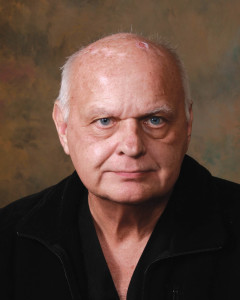Neurosurgeon's trudge through a snowstorm saves patient
A surprise snow and ice storm that shut down Birmingham, Ala., in January 2014 couldn’t stop a dedicated neurosurgeon and his resourceful team at Trinity Medical Center from saving a life. With icy roads blocked by traffic, Dr. Zenko Hrynkiw, the hospital’s only neurosurgeon, walked six miles through the storm to conduct a life-saving surgery.
On Jan. 28, forecasters weren’t predicting snow for the Birmingham area, where winter weather is usually mild. Hrynkiw, who began his practice in 1983 at Birmingham’s Baptist Montclair Hospital (later purchased by Community Health Systems and renamed Trinity Medical Center), drove to nearby Brookwood Hospital that morning to assist a fellow neurosurgeon.
After finishing up that surgery, Hrynkiw got a call from Steve Davis, the charge nurse at Trinity’s neuro intensive care unit, about a patient who had taken a turn for the worse.
“He texted me a picture of the CT scan, which revealed the patient had a brain bleed and needed emergency surgery,” Hrynkiw says. “Based on the measurement, the patient had a 90 percent chance of death without the surgery. I knew I had to get there.”
But by this point, snow and ice were blanketing the city, bringing traffic to a standstill. “During surgery, I didn’t have a clue what was going on outside,” Hrynkiw says. “When I got out of the doctors’ parking lot, I saw accidents to the left and right on the road from the hospital, which is about halfway down Shades Mountain [a 1,000-foot ridge]. No one was getting anywhere.”
“The patient had a 90 percent chance of death without the surgery. I knew I had to get there.” — Dr. Zenko Hrynkiw
The Trinity team tried to find someone to transport Hrynkiw, but the roads were completely blocked, even for emergency personnel.
“I told the charge nurse my predicament and said I was going to abandon my car and try to walk the 6 miles,” he says.
Although Hrynkiw was born and raised in Chicago—receiving his medical degree from Loyola University Chicago Stritch School of Medicine and completing his general surgery and neurological surgery residencies at Loyola University—he had gotten used to the “nice and warm climate” of Birmingham. That meant he wasn’t exactly prepped for his adventure in 20-degree weather: “I only had on my operating room slip-on shoes, scrubs and a light jacket,” he says. “Even though I slipped, slid and rolled, I finally got down to the foot of the mountain.”
As he trudged, Hrynkiw kept in contact with the hospital and checked the patient’s blood pressure and other vitals via text. The patient was getting worse, so Hrynkiw asked his team to get the patient and the operating room ready for his arrival.
At the bottom of the mountain, he took a short break to warm up in an ambulance, which was stuck in traffic. The rest of the journey to Trinity was hilly and treacherous—a walk made even more difficult by his slip-on shoes.
“I was struggling and sweating to go up the hills, but all the exertion warmed me up,” he says.
About a mile from Trinity, one of the hospital’s sales reps met Hrynkiw with a four-wheel drive vehicle and drove him the rest of the way.
By the time Hrynkiw got there, two hours after starting his hike, he was ready to go—and so was the patient.
“My team had taken great care of him,” he says. “The patient was under anesthesia and had already been prepped for surgery. I walked in, introduced myself to the patient’s family and took him to surgery. The patient got through the four-hour surgery fine and is still alive.”
Although Hrynkiw maintains that the snowy walk “really wasn’t that big of a deal,” Trinity CEO Keith Granger denies the humble brush-off.
“It wasn’t just a walk in the park,” the Birmingham News quoted Granger. “Given the conditions, the temperatures and the terrain, it’s a remarkable physical and mental feat. And we have an individual alive today who wouldn’t be here if not for his efforts.”
Hrynkiw says his trek underscores how advancements in technology, if only in the form of cell phones and text messaging, can save lives.
“When I started practice—I’m now 62—we didn’t have MRIs or CT scans, and we had to spend hours examining a patient,” he says. “But on that day, I had no problem getting several text images of the patient that I could view and use to make decisions and direct care to the nurses, who did their part to save him. There was no delay; the patient got first-class care the whole time.”
Share Email Care Delivery, Physician






